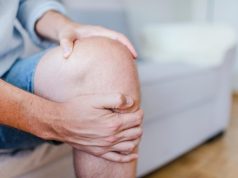In each PM2.5 stratum, moderate and high levels of exercise were associated with a reduced risk for death versus inactivity
MONDAY, Aug. 16, 2021 (HealthDay News) — Habitual exercise is associated with a reduced risk for death, regardless of exposure to fine particulate matter (PM2.5), according to a study published online Aug. 16 in CMAJ, the journal of the Canadian Medical Association.
Cui Guo, Ph.D., from the Chinese University of Hong Kong, and colleagues recruited 384,130 adults with 842,394 medical examination records between 2011 and 2016 to examine the combined effects of long-term exposure to PM2.5 and habitual exercise on deaths from natural causes in Taiwan.
The researchers found that compared with inactivity, a higher level of habitual exercise was associated with a lower risk for death (hazard ratios [95 percent confidence intervals], 0.84 [0.80 to 0.88] and 0.65 [0.62 to 0.68] for the moderate and high exercise groups, respectively). Compared with lower exposure, higher PM2.5 exposure was associated with an increased risk for death (hazard ratios [95 percent confidence intervals], 1.02 [0.98 to 1.07] and 1.15 [1.10 to 1.20] for the moderate and high PM2.5 exposure groups, respectively). Adults with high levels of habitual exercise and low PM2.5 exposure had a lower risk for death from natural causes than inactive adults with high PM2.5 exposure. The interaction effect between exercise and PM2.5 exposure on the risk for death was minor but statistically significant (hazard ratio, 1.03; 95 percent confidence interval, 1.01 to 1.06). In each PM2.5 stratum, moderate and high levels of exercise were associated with a lower risk for death versus inactivity.
“Habitual exercise reduces the risk of death regardless of exposure to air pollution, and air pollution generally increases the risk of death regardless of habitual exercise,” the authors write.
Editorial (subscription or payment may be required)
Copyright © 2021 HealthDay. All rights reserved.








